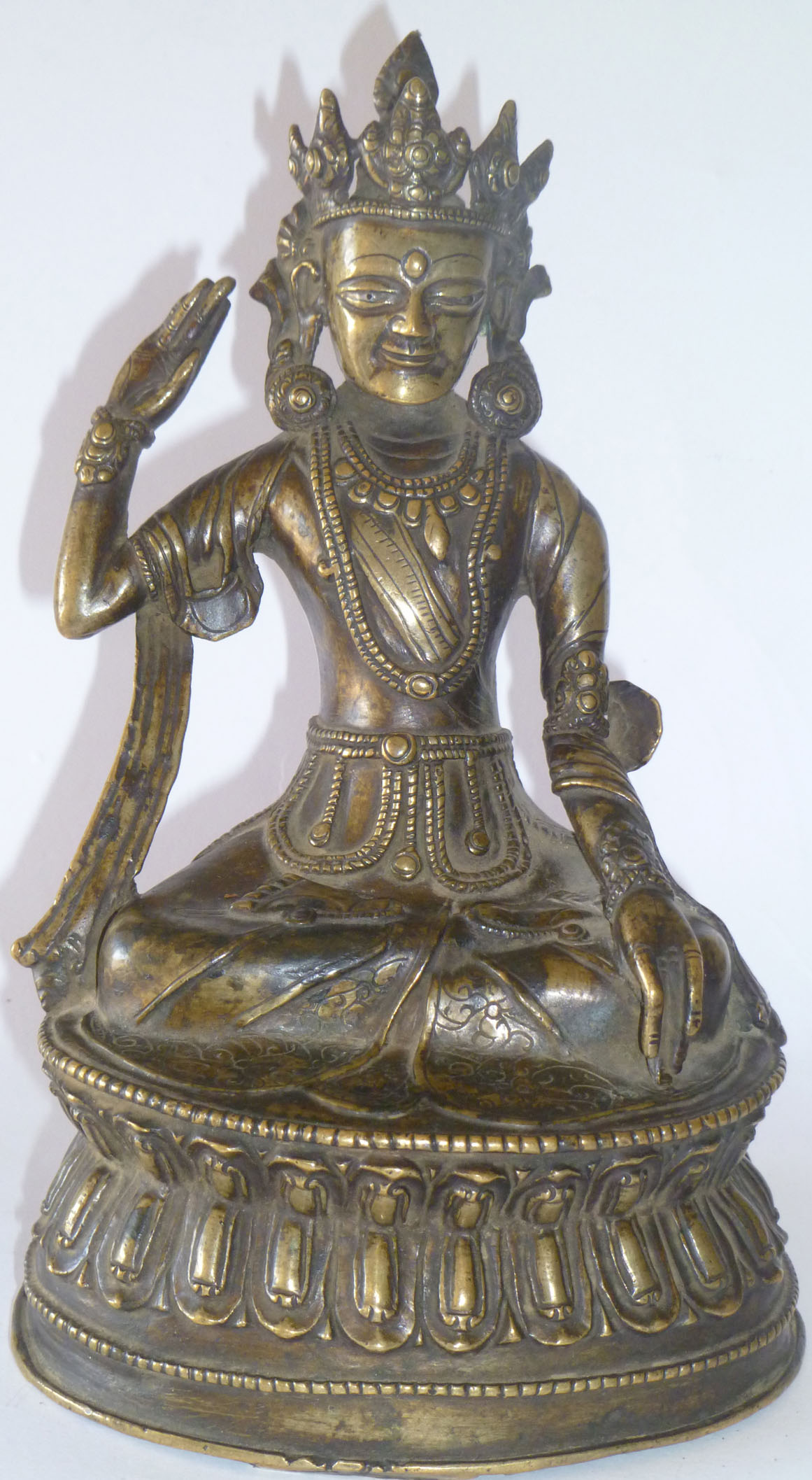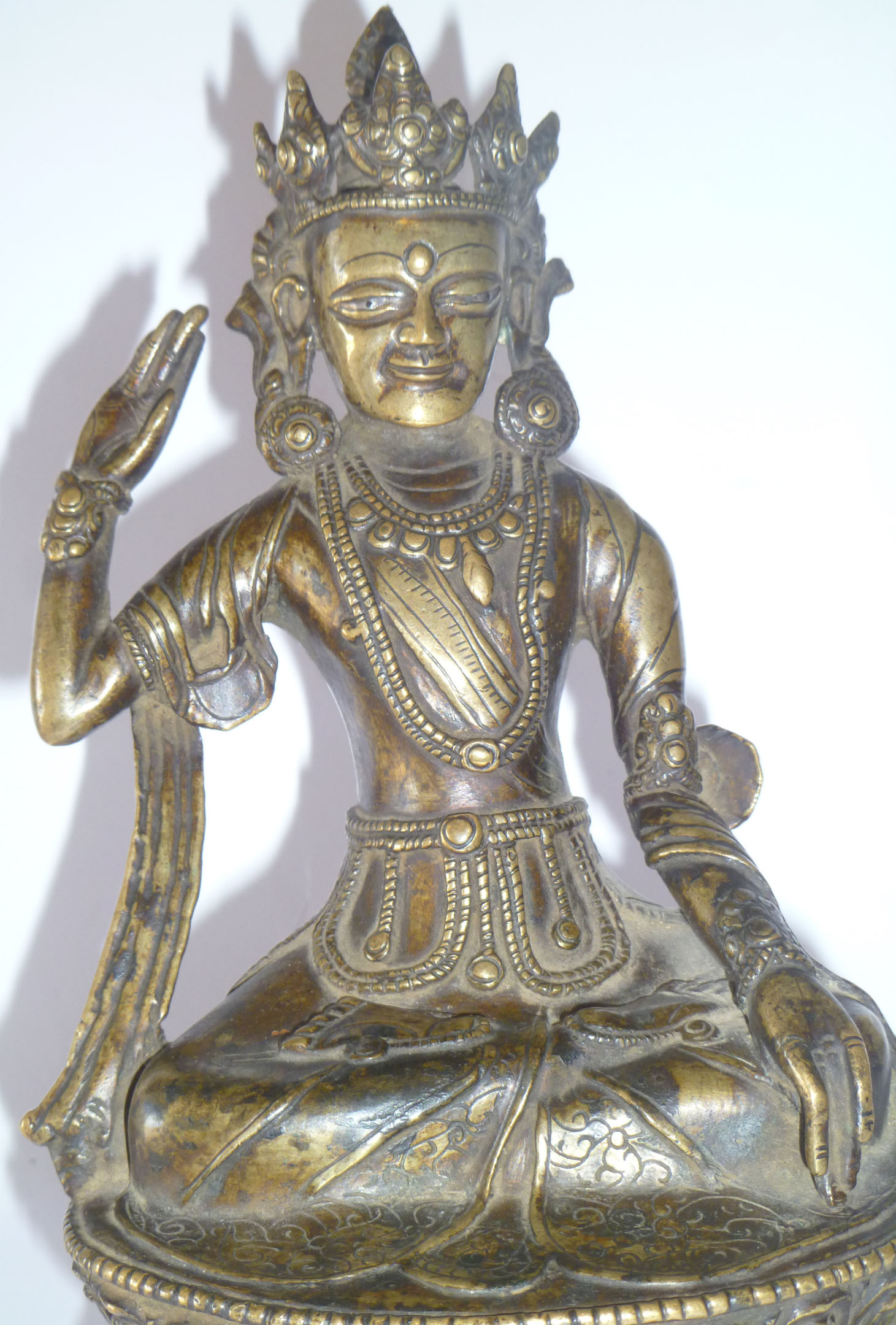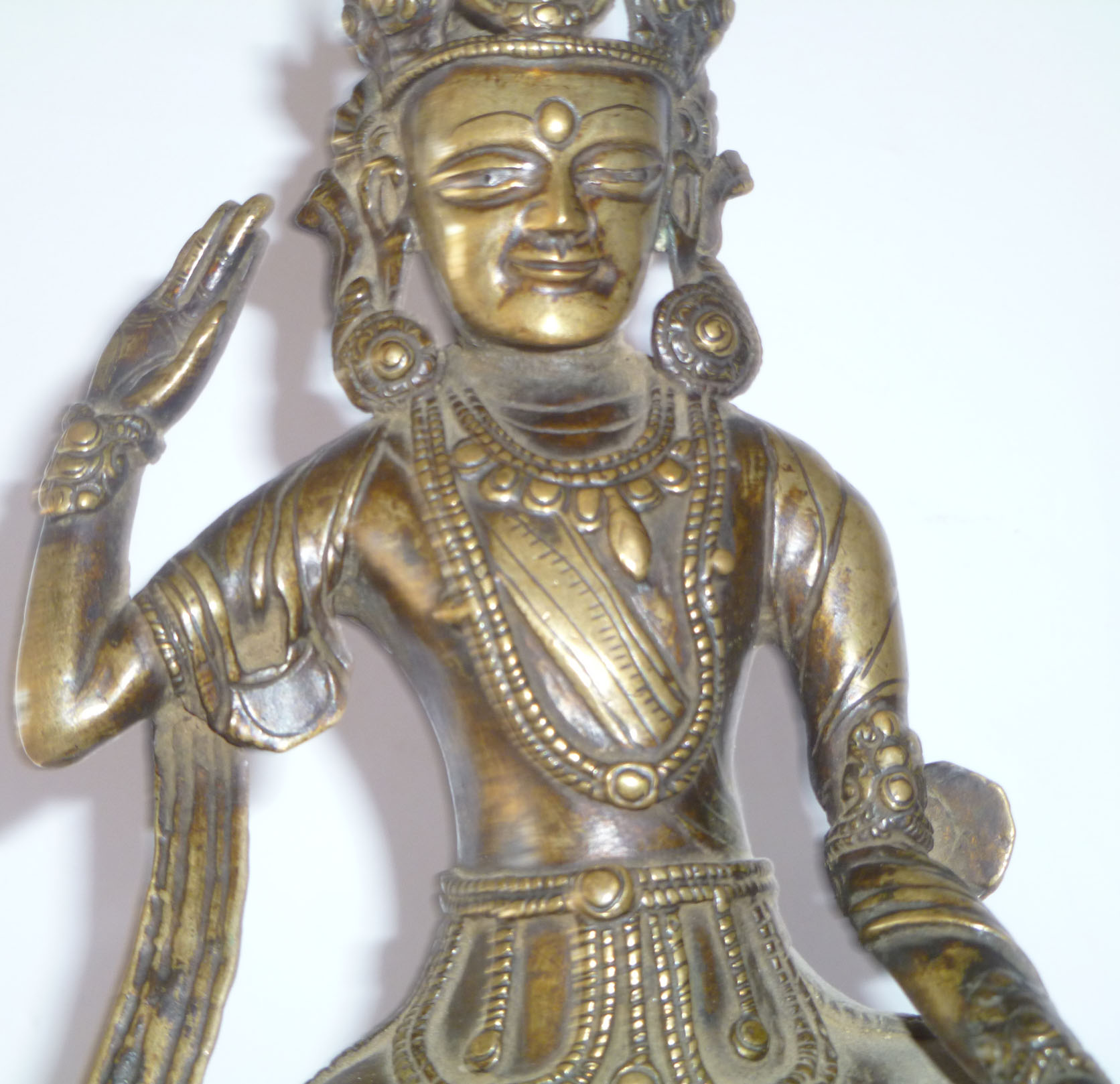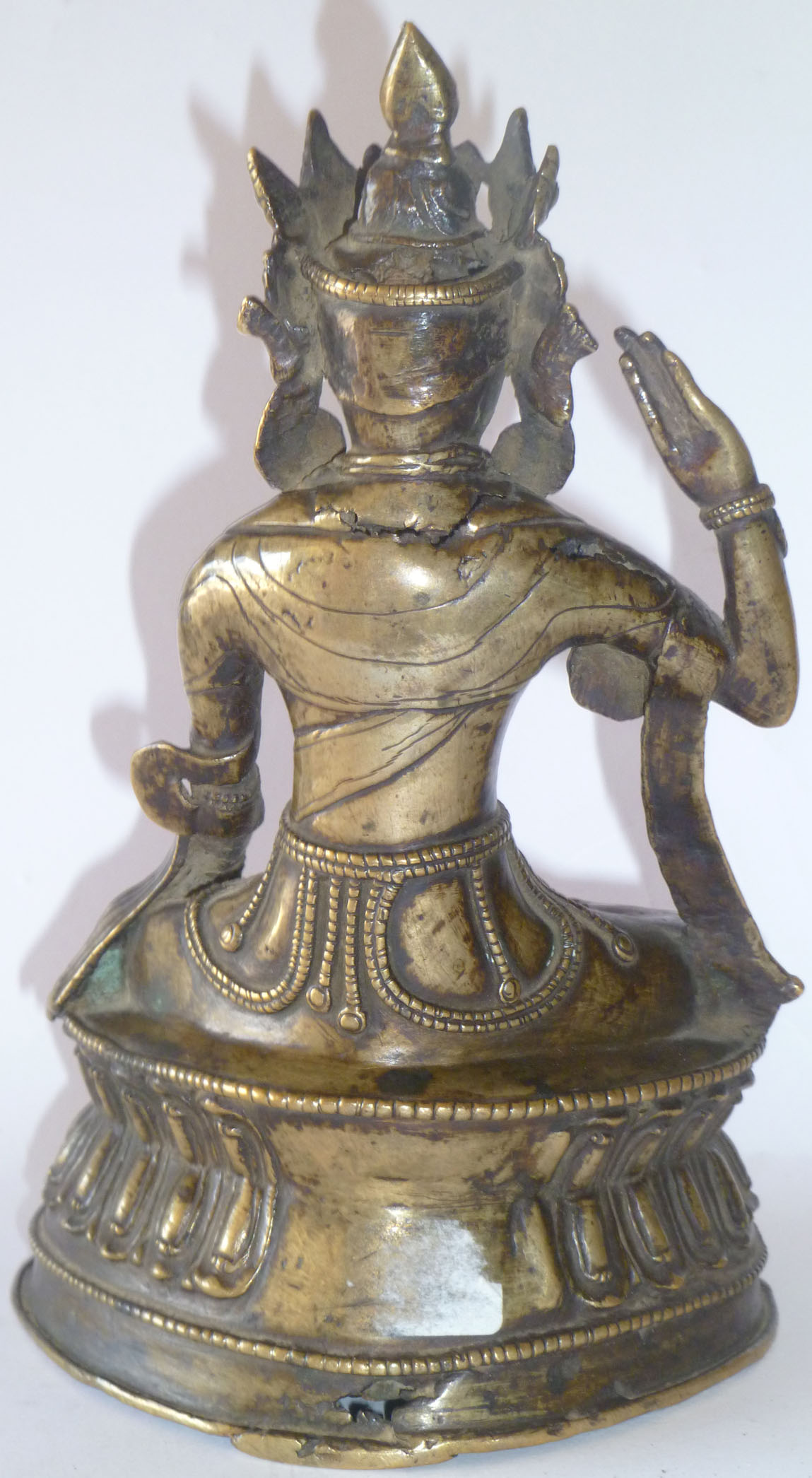Nampar Gyalwa " Bon Deity "Tibet - copper alloy, eyes inlaid with silver - heght 20cm - 16th century
The story of Tonpa Shenrab as Nampar Gyalwa (Tibetan: rnam par rgyal ba) is described in detail in chapter 50 of the Ziji, a twelve volume, 61 chapter biography of Tonpa Shenrab. The essential story concerns a Chinese king named Kongtse Trulkyi Gyalpo who attempted to build a temple on the great ocean west of Olmo Lungring. His intention was to acquire merit for the next life. The king told no one except the spirits and daemons of the ocean. Due to a misunderstanding between the King, his wife and the spirits and demons, the daemons destroyed the half built temple. Deeply upset the King prayed to Tonpa Shenrab who then appeared in the form of Complete Victory (Nampar Gyalwa), blue in colour with an angry expression, one face and two hands. The right hand is held up in the gesture of Complete Victory and the left placed on the knee. Behind Tonpa was a special fierce throne back (Tib.: gyab yol) with a lion at the bottom eating a human figure and a dragon above eating a naga serpent spirit, a sea monster above that, and topped with a Horned Eagle. Tonpa also emanated four wrathful multi-headed deities each standing in the four directions. The daemons were defeated and the temple was completed and named the White-black Shimmering Temple (Tib.: gsas khang dkar nag bkra gsal). The chief of the daemons became the protector and the temple became a library for the teachings of Tonpa Shenrab.
Kagyud Nampar Gyalwa (bKa' brgyud rnam par rgyal ba) (late 16th century) was a king in Central Tibet. He belonged to the Phagmodrupa dynasty which reigned in Tibet or parts of it from 1354 to the early 17th century. He was the penultimate ruler of the line. By this time the dynasty had almost ceased to wield any executive power in Tibet. His reign is the most obscure of all in the history of the Phagmodrupa, and there is very little information about his actions in the chronicles. Chinese sources are at variance with the Tibetan ones, since they say that a ruler called Zhashi Cangbu (Tashi Tsangpo) flourished at this time.
|




